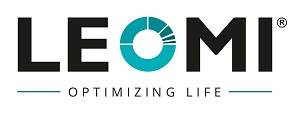In the world of fluid dynamics and industrial process control, accurate measurement of flow rates is crucial. Among the various technologies available, thermal mass flow meters stand out due to their precision, versatility, and wide range of applications. This blog delves into the principles behind thermal mass flow meters, their key features, various types, and their diverse applications across industries.
Principles of Thermal Mass Flow Meters:
Working Principle:
Thermal mass flow meters measure the mass flow rate of a gas by detecting the amount of heat transferred from a heated element to the gas flowing past it. The fundamental principle relies on the relationship between heat transfer and fluid flow.
Heating Element: The meter contains a heated sensor element and sometimes an additional sensor to measure the gas’s temperature.
Heat Transfer: As the gas flows over the heated element, heat is carried away from the element into the gas.
Temperature Difference: The rate of heat loss is directly proportional to the mass flow rate of the gas. By measuring the temperature difference between the heated element and the gas, the flow rate can be accurately determined.
The primary advantage of thermal mass flow meters is their ability to measure the mass flow rate directly without the need for additional pressure and temperature compensation, which is often required with volumetric flow meters.
Key Features of Thermal Mass Flow Meters:
High Accuracy: These meters provide precise measurements of mass flow rates, essential for critical applications.
Wide Rangeability: Thermal mass flow meters can accurately measure both low and high flow rates, making them suitable for various applications.
No Moving Parts: With no moving parts, these meters are less prone to wear and tear, resulting in lower maintenance requirements and higher reliability.
Direct Mass Flow Measurement: Unlike volumetric flow meters, thermal mass flow meters measure the mass flow rate directly, simplifying the measurement process and improving accuracy.
Types of Thermal Mass Flow Meters:
By-pass Capillary Thermal Mass Flow Meters:
Working Principle: These meters use a capillary tube through which the gas flows. The tube is heated, and the temperature difference across the tube is measured to determine the flow rate.
Applications: Ideal for low-flow applications such as in laboratories, medical devices, and gas chromatography.
Insertion Thermal Mass Flow Meters:
Working Principle: These meters have a probe that is inserted into the flow stream. The probe contains both the heated element and temperature sensors. The temperature difference is used to calculate the flow rate.
Applications: Suitable for larger pipes and ducts, commonly used in HVAC systems, large industrial processes, and environmental monitoring.
Inline Thermal Mass Flow Meters:
Working Principle: These meters have an inline configuration where the entire flow passes through the meter body. The heated element and temperature sensors are integrated within the meter.
Applications: Used in applications requiring high accuracy and repeatability in automobile, textile, plastic, chemical, food and beverage industry, and pharmaceuticals etc.
Applications of Thermal Mass Flow Meters:
Industrial Processes:
Chemical Industry: Thermal mass flow meters are used to monitor and control the flow of gases in chemical pilot reactor plant for precise reactor control, Exhaust vent gas for exhaust emission control of corrosive gases.
Cement Industry: These meters help in measuring and controlling the flow of air , flue gas and hot exhaust gases for enhancing process efficiency, quality and safety.
Petrochemical Industry: These meters help in measuring and controlling the flow in various process control in pilot plant in enhancing process efficiency and safety.
Environmental Monitoring:
Air Quality Measurement: Thermal mass flow meters are employed to measure the flow of air and gases in environmental monitoring systems, helping to maintain air quality standards.
Emissions Monitoring: Industries use these meters to monitor and report emissions, ensuring compliance with environmental regulations.
Energy Management:
HVAC Systems: In heating, ventilation, and air conditioning systems, thermal mass flow meters are used to measure and control the flow of air and gases, optimizing energy consumption and improving system efficiency.
Compressed Air Systems: These meters are crucial for monitoring the flow of compressed air in manufacturing and industrial applications, aiding in leak detection and energy conservation.
Pharmaceutical and Biotechnology:
Process Control: Thermal mass flow meters are used to measure and control the flow of oxygen, compressed air and aeration air in pharmaceutical manufacturing, ensuring precise dosage and process control.
Fermentation: In biotechnology, these meters monitor the flow of oxygen, co2, methane etc gases in fermentation processes, crucial for maintaining optimal conditions for microbial growth.
Advantages and Limitations:
Advantages:
Accuracy: High precision in measuring mass flow rates.
Versatility: Applicable to a wide range of gases.
Low Maintenance: With no moving parts, maintenance is minimal, and reliability is high.
Direct Measurement: Eliminates the need for additional pressure and temperature compensation.
Limitations:
Gas-Specific Calibration: Requires calibration for the specific gas being measured, which can limit versatility in some applications.
Temperature Sensitivity: Significant changes in fluid temperature can affect accuracy, requiring additional compensation or adjustments.
Conclusion:
Thermal mass flow meters are an invaluable tool in various industries, providing accurate and reliable measurements of gas flow rates. Their ability to measure flow rates directly, without the need for additional compensation, makes them a preferred choice for many applications. From industrial processes to environmental monitoring and energy management, thermal mass flow meters play a crucial role in ensuring efficiency, safety, and compliance.
A noteworthy example in this field is the Leomi Insertion Thermal Mass Flow Meter, which offers exceptional accuracy and reliability for larger pipes and ducts, commonly used in industrial and HVAC applications. With advanced features and robust design, Leomi’s meters are well-suited for demanding environments, providing precise measurements and aiding in process optimization and energy management.
By understanding their principles, types, and applications, industries can better harness the power of thermal mass flow meters to optimize their processes and achieve their operational goals.






